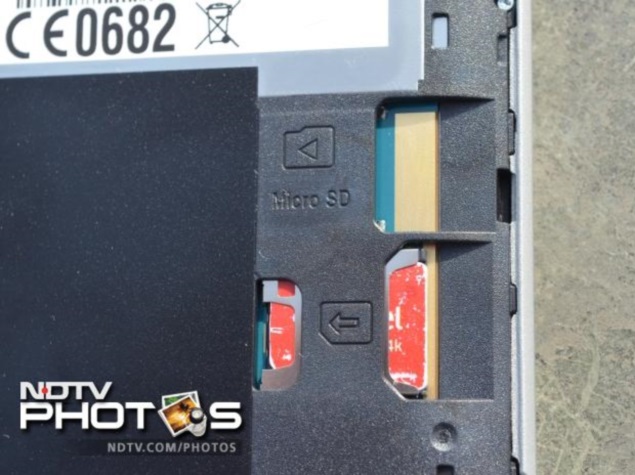- Home
- Mobiles
- Mobiles Features
- How Mobile Manufacturers Use Good Old SMS to Track Activations
How Mobile Manufacturers Use Good-Old SMS to Track Activations

What happens when you first put a SIM in another phone - an Android smartphone for example, or even a feature phone - is not as clear. While an Android smartphone typically needs to contact Google's servers to setup up certain services such as mail and Play Store, there is nothing to suggest that something might be happening behind the scenes without users' knowledge.
Yet there's at least one part of the process that has no on-screen indications, and few, if anyone, outside the industry would be familiar with it.
Phones sold in India by certain manufactures are programmed to send out a SMS to a virtual number whenever a new SIM is inserted. The message contains the IMEI number of the handset - which uniquely identifies that device - as well as other details associated with the SIM, including the phone number.
This means that manufacturers can get an exact picture of how many phones were activated by end users on a given day - a really powerful statistic to have, as manufacturers would otherwise have no idea what happens to a device once it's been shipped to the distributor.
Unicel Technologies, a Bangalore-based firm that specialises in providing integrated cloud communications solutions across SMS, voice, email and USSD, provides consultancy services to India's biggest handset manufacturers. NDTV Gadgets asked Founder and Managing Director, Vinay Agrrawal, the motivation of the companies behind implementing this 'tracker'.
"With IMEI, [the companies] get to know what models are selling," says Agrrawal. Since the companies also have access to the mobile number, figuring out the region the phone was sold in is trivial. "This is the best source of information [for manufacturers]... it helps them decide which model to push in which market - whether dual-SIMs are being sold, or single-SIMs... you can take out tons of information out of it."
In other words, manufacturers can find out which smartphones are 'fast moving' and which lie collecting dust at retail shops, by comparing the activation reports against stock sent to distributors.
Industry insiders say this is a pretty widespread practice, not restricted to just a few brands or a few models. These automated messages are sent from cheap feature phones, entry-level smartphones, and the flagships of the biggest brands, to give the company a clear picture of what the market wants. This is a little worrying from a privacy standpoint though, since the information shared includes personally identifiable data, such as your phone number.
What other information are the manufacturers collecting - are location details like the cell id also included in these text messages? And how often are these messages sent out? Agrrawal insists that nothing other than the IMEI and the phone number are collected, and adds that the messages are sent only when you insert a new SIM, or when you change a SIM - there's no 'periodic' phoning home, say, every 6 months if you don't change your SIM.
While that may put some fears to ease, it makes you wonder - what else is your phone doing behind your back?
Catch the latest from the Consumer Electronics Show on Gadgets 360, at our CES 2026 hub.
Related Stories
- Samsung Galaxy Unpacked 2025
- ChatGPT
- Redmi Note 14 Pro+
- iPhone 16
- Apple Vision Pro
- Oneplus 12
- OnePlus Nord CE 3 Lite 5G
- iPhone 13
- Xiaomi 14 Pro
- Oppo Find N3
- Tecno Spark Go (2023)
- Realme V30
- Best Phones Under 25000
- Samsung Galaxy S24 Series
- Cryptocurrency
- iQoo 12
- Samsung Galaxy S24 Ultra
- Giottus
- Samsung Galaxy Z Flip 5
- Apple 'Scary Fast'
- Housefull 5
- GoPro Hero 12 Black Review
- Invincible Season 2
- JioGlass
- HD Ready TV
- Laptop Under 50000
- Smartwatch Under 10000
- Latest Mobile Phones
- Compare Phones
- Honor Win RT
- Honor Win
- Xiaomi 17 Ultra Leica Edition
- Xiaomi 17 Ultra
- Huawei Nova 15
- Huawei Nova 15 Pro
- Huawei Nova 15 Ultra
- OnePlus 15R
- Asus ProArt P16
- MacBook Pro 14-inch (M5, 2025)
- OPPO Pad Air 5
- Huawei MatePad 11.5 (2026)
- Xiaomi Watch 5
- Huawei Watch 10th Anniversary Edition
- Acerpure Nitro Z Series 100-inch QLED TV
- Samsung 43 Inch LED Ultra HD (4K) Smart TV (UA43UE81AFULXL)
- Asus ROG Ally
- Nintendo Switch Lite
- Haier 1.6 Ton 5 Star Inverter Split AC (HSU19G-MZAID5BN-INV)
- Haier 1.6 Ton 5 Star Inverter Split AC (HSU19G-MZAIM5BN-INV)

















